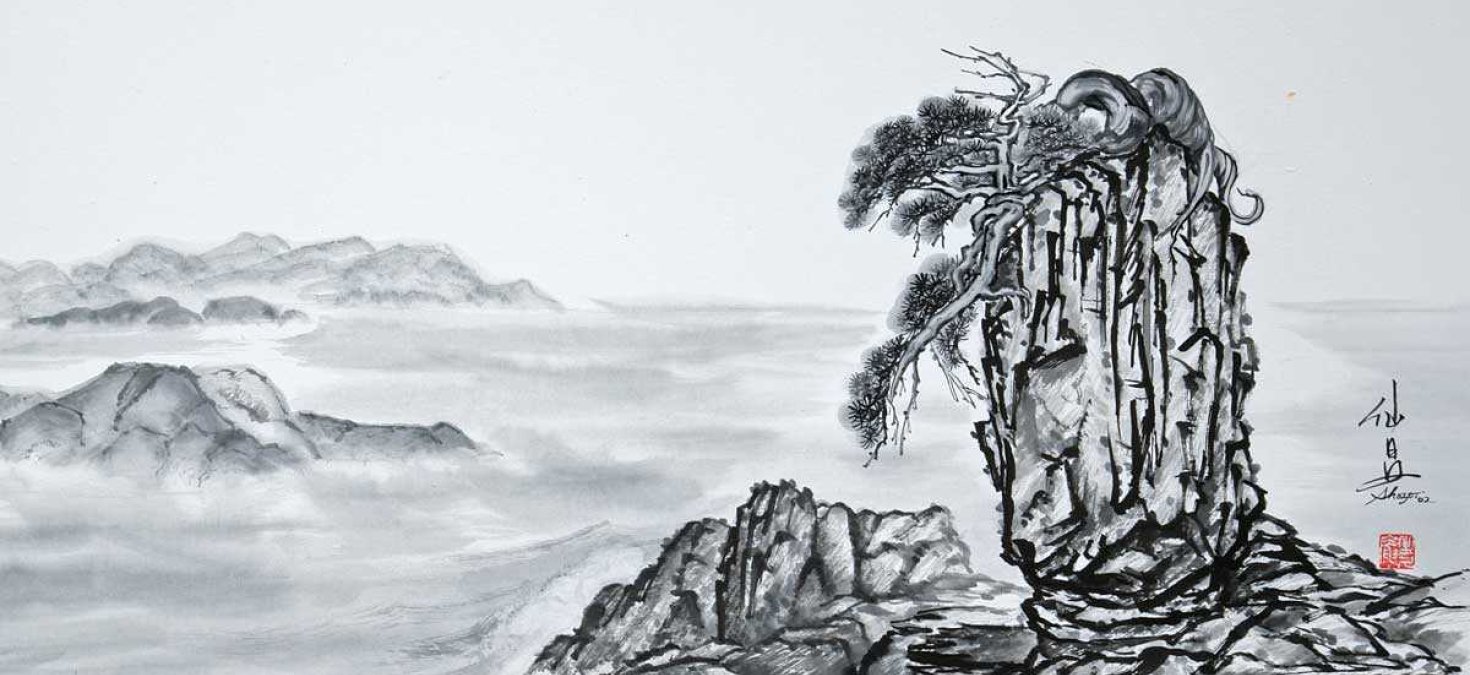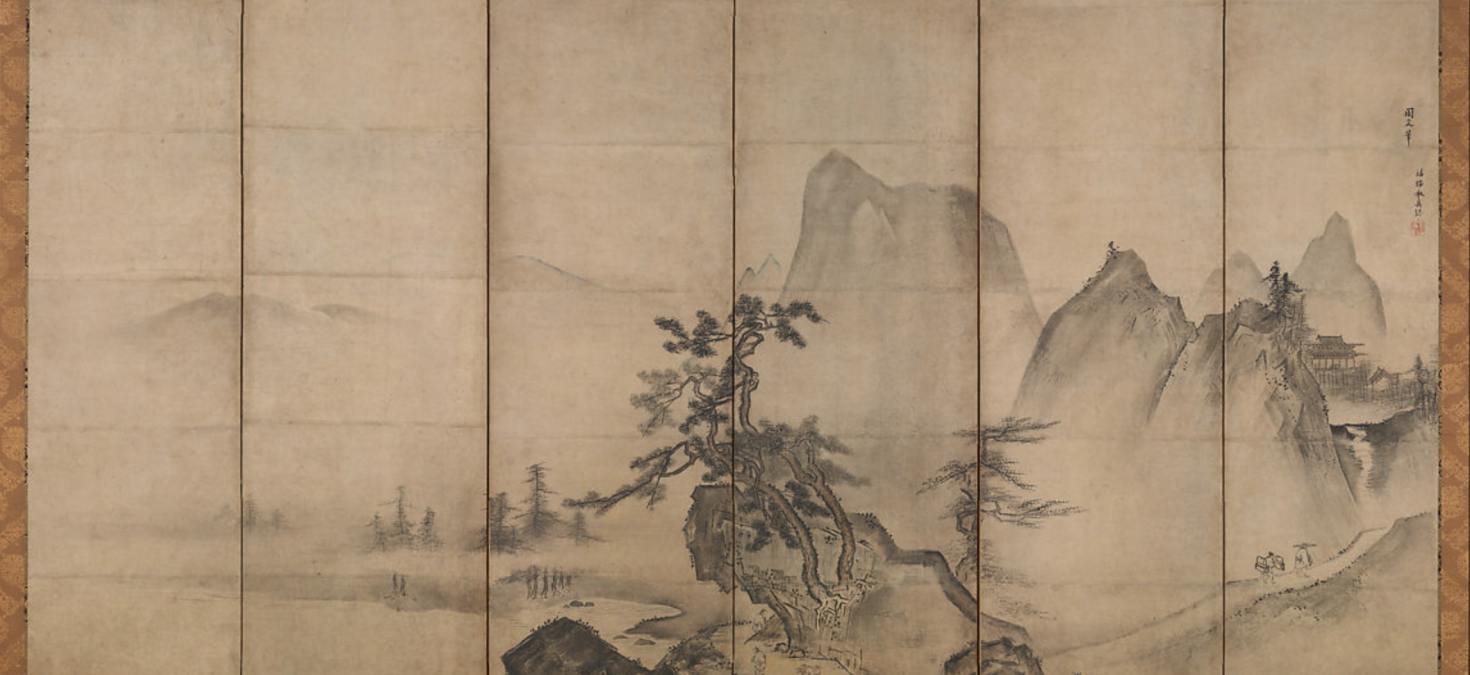Sumi‑e & The Art of Self-Forgetting

By Paul Duarte-Noe, Japan House Intern and Senior in Cinema and Media Studies
People today are suffering from anxiety and depression more than ever before. This issue of heightened stress is starting to be understood as a problem of self-absorption. So, modern therapies and coping strategies are being developed for the purpose of dissociating and achieving relief. One such strategy is referred to in psychology as cognitive de-fusion, the conscious separation of one’s thoughts from personal identity. However, this idea isn’t new but has been a core concept in sumi-e, the Zen ink paintings of Japan.

“Pine Trees (Shōrin-zu byōbu)” by Hasegawa, Tohaku via Wikicommons
In the West, painters have traditionally employed techniques to produce an effect of realism - being precise, refined, and literal in form. Its techniques display a realistic sense of linear perspective to create an accurate portrayal of the scene. It is often subject-centric, with much of the space tightly packed with content and centered on a human figure. In contrast, the Zen ink paintings of sumi-e are typically more evocative than descriptive, utilizing techniques that are loose and rough. It can do so effectively because it is concerned primarily with inspiring contemplation and generating desired mental states rather than accuracy of form. The art was not a strict reproduction of physical structure but a representative medium of applied philosophy.
One of the foundations of sumi-e is known as Nishida’s Philosophy, an approach to aesthetics based on self-effacement, or erasing the self. Nishida describes the concept as an expression of the Zen ideal of Muga (無我), or emptiness. The purpose of evoking this emptiness of self is to become lost in art and the splendor of nature. A typical sumi-e piece exhibiting this concept is minimalistic. There are only two elements: the whiteness of the paper and the blackness of the ink. There is a sense of simplicity, calmness, and a reverence for the natural world.

"Dragon Pine Landscape" by Professor Emeritus Shozo Sato via his book, Sumi-e
Since discovering sumi-e as a child, I’ve often returned to it throughout my life. While placing black ink on rice paper, I took the idealized and tranquil world of my imagination and made it real. Through the process of creating, I disappeared into the void on the page and any concerns I had were temporarily abandoned. This is an experience we can all benefit from right now. So, in this prolonged moment of anxiety let’s forget ourselves and enjoy sumi-e.

“Mountain Landscape” Attributed to Tenshō Shūbun via The Metropolitan Museum of Art